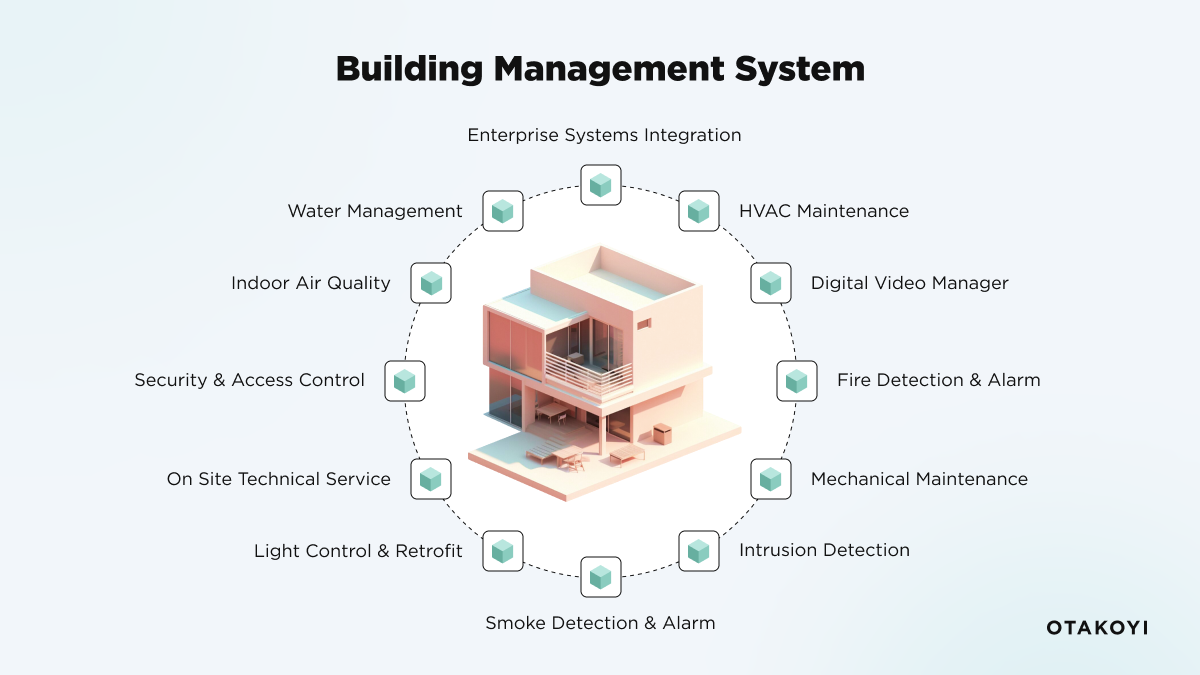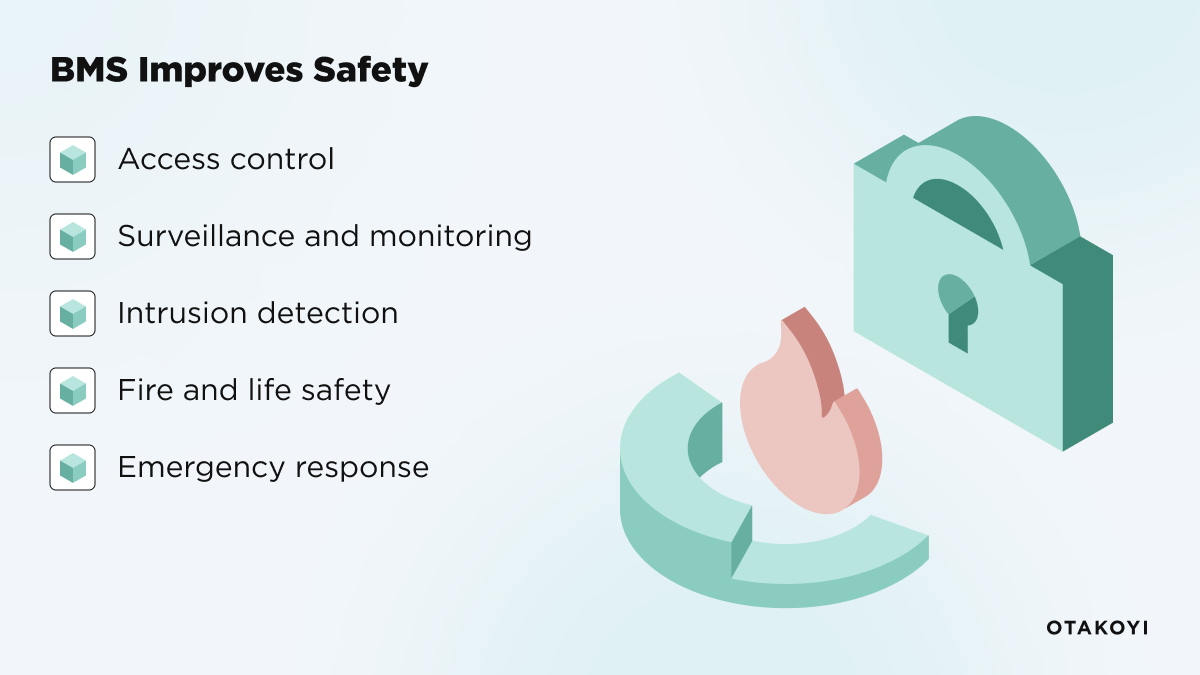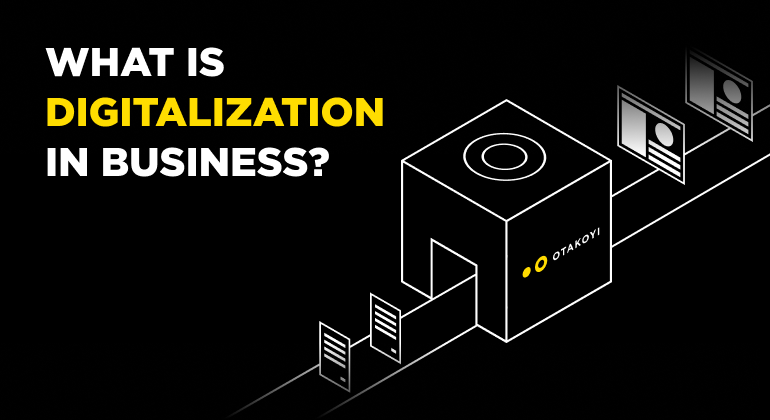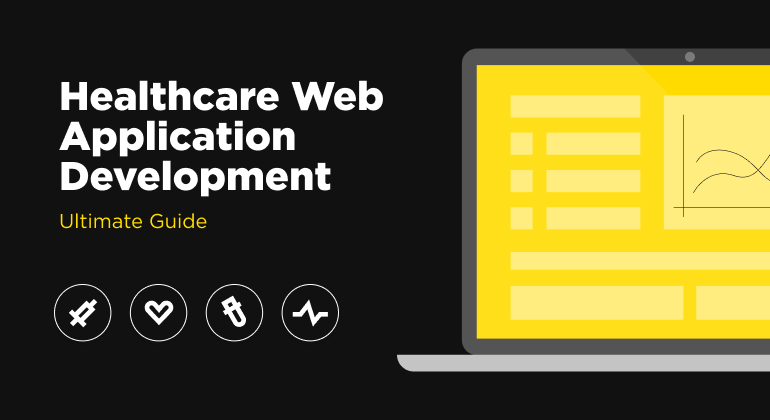Optimizing Healthcare Facilities with Building Management Systems
The importance of comfort, safety, and efficiency of healthcare facilities is one of the main tasks to achieve. How do you make it happen? That’s when BMSs (Building Management Systems) come in. This solution stands at the forefront of optimizing various aspects of healthcare infrastructure. You might find it surprising, but the global market for Building Management Systems (BMS) in the healthcare industry is expected to reach $6.4 billion by 2027. The growth rate at a CAGR is 12.5% from 2020 to 2027. What is more, implementing facilities with BMS solutions can decrease the carbon footprint by up to 20%. It significantly contributes to global efforts to fight climate change.
It regulates environmental conditions, enhances safety and security measures, and, in general, creates a system that is aimed at healing and providing operational excellence. In this article, we are going to discuss the importance of BMS in healthcare facilities and explore its benefits, challenges, and best practices for implementation. Are you ready to go through this intricate journey? Let’s find out more about modern healthcare building management systems together.
What are BMS Systems?
Before we tackle the main points of this article, we should define what exactly BMS systems in hospitals mean. Broadly speaking, these systems are sophisticated networks of hardware and software that control and monitor various building functions. There is no better solution for modern medical facilities to establish. BMS in healthcare facilities are responsible for centralized control over critical systems such as:
heating,
ventilation,
air conditioning (HVAC),
lighting,
security,
and more (depending on the requirements and needs of that or another institution).

How does it work, you may ask? What is their role in a healthcare facility?
At their core, these systems consist of sensors, actuators, controllers, and a central computer or server that collects and processes data from these components. For example, sensors measure temperature, humidity, and occupancy levels, while actuators control devices such as HVAC dampers, lighting fixtures, and access doors based on input from the controllers.
The central computer is the Building Management System software. What is building system functionality? This software interprets all the data from sensors, executes control algorithms, and provides a user interface for facility managers. They, in turn, are able to monitor and adjust system settings if needed. Sounds fascinating, don’t you think? Having established this level of automation and control, medical institutions can conduct the efficient operation of building systems while optimizing energy usage and maintaining patient comfort when going through any medical procedures.
In simple language, BMS systems for hospitals serve as the brain center of a building for smart management of resources, operational effectiveness, comfort, and overall cost-efficient building performance.
What Makes BMS in Healthcare Facilities so Crucial?
It is impossible to overestimate the significance of BMS systems in places where patient comfort and safety are vital. It may be rather challenging to reach the balance between optimized operational efficiency and an environment conducive to healing. However, we will surprise you by saying that it is actually very easy.
First of all, BMS in healthcare settings regulates indoor conditions such as temperature control, humidity, and air quality. When these parameters are optimal, you provide patients with a proper level of comfort and well-being. These factors are essential for their recovery and overall satisfaction.
Secondly, these systems make sure that you follow all regulatory requirements, industry standards, and compliance related to environmental control and safety. All the critical parameters are constantly monitored, and alerts are provided for any deviations. Moreover, facility managers can proactively address any potential risks and maintain a safe and healthy environment for patients, staff, and visitors.
Finally, BMS in healthcare facilities promotes efficient energy consumption and management. They can easily track and optimize the operation of HVAC, lighting, and other building systems. How does it happen? You can implement energy-saving strategies into those systems, e.g., schedule medical equipment usage based on occupancy patterns or adjust limits for optimal efficiency. This way, you reduce operational costs and minimize environmental impact. What a green solution, do you agree?
Advantages of BMS in Healthcare Facilities
The importance of BMS systems leads us to the benefits for the healthcare facility. So, let’s just pinpoint the main ones.

#1 Enhanced patient comfort (precise control over environmental conditions such as temperature, humidity, and air quality, a comfortable and healing environment for patients).
#2 Improved operational efficiency (streamlined facility operations, optimized energy efficiency, and minimized downtime due to equipment failures or malfunctions).
#3 Enhanced safety and security (monitoring access control, surveillance cameras, and alarm systems, enhancing safety and security systems for patients, staff, and visitors due to integration with the security system).
#4 Regulatory compliance (real-time monitoring and reporting capabilities, allowing the healthcare system to be compliant with regulatory requirements related to environmental control and safety).
#5 Cost savings (demand response, load shedding, peak shaving, reduced energy consumption, and lower utility costs for healthcare facilities).
#6 Data-driven decision-making (collecting and analyzing data from various building systems, providing valuable insights that inform decision-making processes related to facility management, maintenance, and resource allocation).
As you can see, implementing BMS in hospitals stands as a real game-changer for healthcare and facility managers. All these advantages make it a worthwhile investment for all medical organizations.
How Can You Improve Safety and Security with BMS?
When you ask anyone involved in healthcare facilities what the main priority is, you get only one answer - safety and security. All people, patients, staff, and visitors expect a secure and protected environment when being/visiting/working in a medical facility. So, how can BMS systems enhance safety and security? There are different technologies and options, and we’re inviting you to discover the most useful and commonly-used ones.

1. Access control
The whole facility can have control systems at all entry and exit points. BMS in healthcare facilities makes it possible to restrict access to authorized personnel only, log entry events, prevent unauthorized access, and enhance security as a result.
2. Surveillance and monitoring
It may be difficult for just one person to constantly check and monitor all the cameras. That is why BMS systems can be helpful in that matter, as they interface with surveillance cameras and monitoring devices to provide complete coverage of critical areas within the facility. Personnel can quickly detect and respond to any potential security threats or incidents.
3. Intrusion detection
Moreover, it is possible to integrate intrusion detection sensors and alarms. So any unauthorized or suspicious activity becomes easily noticeable. It also leads to smooth coordination of security responses.
4. Fire and life safety
We all have heard of fire alarm systems. But with BMS systems, you can incorporate all fire alarm systems, smoke detectors, and emergency lighting to ensure rapid detection and response to fire and other life safety emergencies. It is not only about immediate response but also about automatic evacuation procedures that are initiated by this optimization. Moreover, BMS can notify emergency responders and help mitigate risks to people and property.
5. Emergency response
Since we have already mentioned emergency response in case of fire or smoke, BMS systems can also ensure such response procedures in other accidents. For example: lockdown protocols, mass notification systems, and evacuation routing. Any emergency situation can be handled easily with BMS systems coordinating emergency actions and communicating critical information to stakeholders.
What Are the Solutions to the Challenges That Arise From Implementing BMS in Healthcare Facilities?
Even though implementing BMS in healthcare facilities is significant, there are some challenges associated with their deployment and operation. However, don’t fret about it! There is always a way out. So, buckle up and carefully read as we tackle challenges and solutions to them.
Elevate healthcare efficiency with our tailored BMS solutions
Building systems can be so diverse and made by different manufacturers that integration with BMS systems is complex and challenging. Your solution is to work with experienced integrators who specialize in BMS deployment. Only competent and qualified people can help overcome integration challenges. They are able to leverage industry best practices and proven methodologies.
Scalability
Successful implementation comes not only when the initial one is completed but also when you can scale this system up in the future. And any healthcare facility is a dynamic environment and may undergo expansions, renovations, or changes in occupancy patterns over time. That may create an obstacle if BMS is not scalable. What is required is to implement modular BMS architectures and scalable hardware/software solutions. In this case, you won’t have any issues when expanding and integrating new building systems.
Data security
No matter the industry, sensitive information is always a top priority for managers to consider. So, when healthcare facilities implement BMS systems, the crucial worry comes down to protecting sensitive patient information and medical records. But there is a solution. With a dedicated team that implements robust cybersecurity and safety measures such as encryption, access controls, and intrusion detection systems, you can sleep well and have peace of mind that it safeguards sensitive data and mitigates any cyber threats.
Training staff
It is not a big deal if your medical staff may require training and support in effectively using and leveraging BMS systems to their full potential. You just have to provide training programs and ongoing support services to help them adapt and exploit BMS systems appropriately.
Cost considerations
One of the most crucial challenges is the price, which includes the initial, maintenance, and operational costs of implementing BMS systems, especially when an institution has a tight budget. What is the solution? You need to conduct a thorough cost-benefit analysis, explore funding options (grants, incentives, and financing programs), and calculate the return on investment (ROI) over the system's lifecycle. One more way is to partner up with a software service provider that offers cost-effective maintenance plans and helps minimize long-term operational expenses while preserving the optimal performance of BMS systems.
Wrapping Up
Looking ahead, it's clear that Building Management Systems (BMS) plays and will play a vital role in shaping the future of healthcare facilities. As technology advances and healthcare organizations put patient comfort, safety, and operational efficiency as a top priority, implementation of BMS solutions will only gain traction. When you leverage all the features and benefits offered, you can easily navigate the challenges of tomorrow with confidence.






